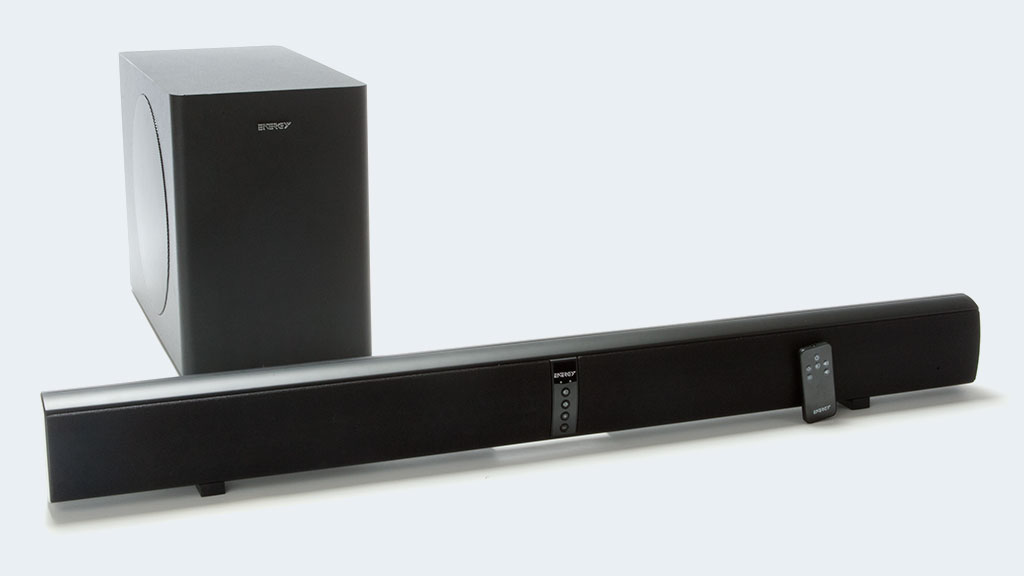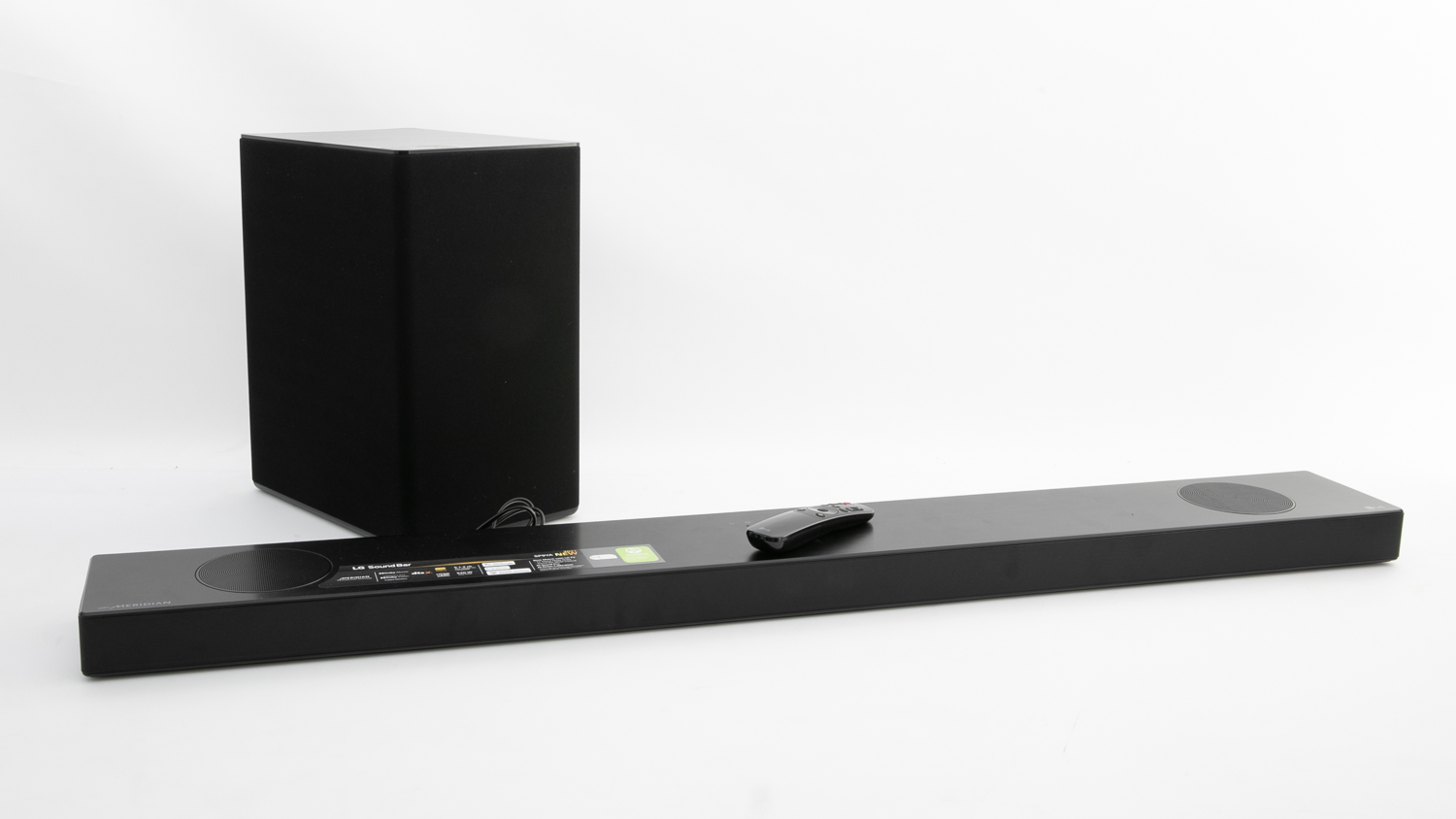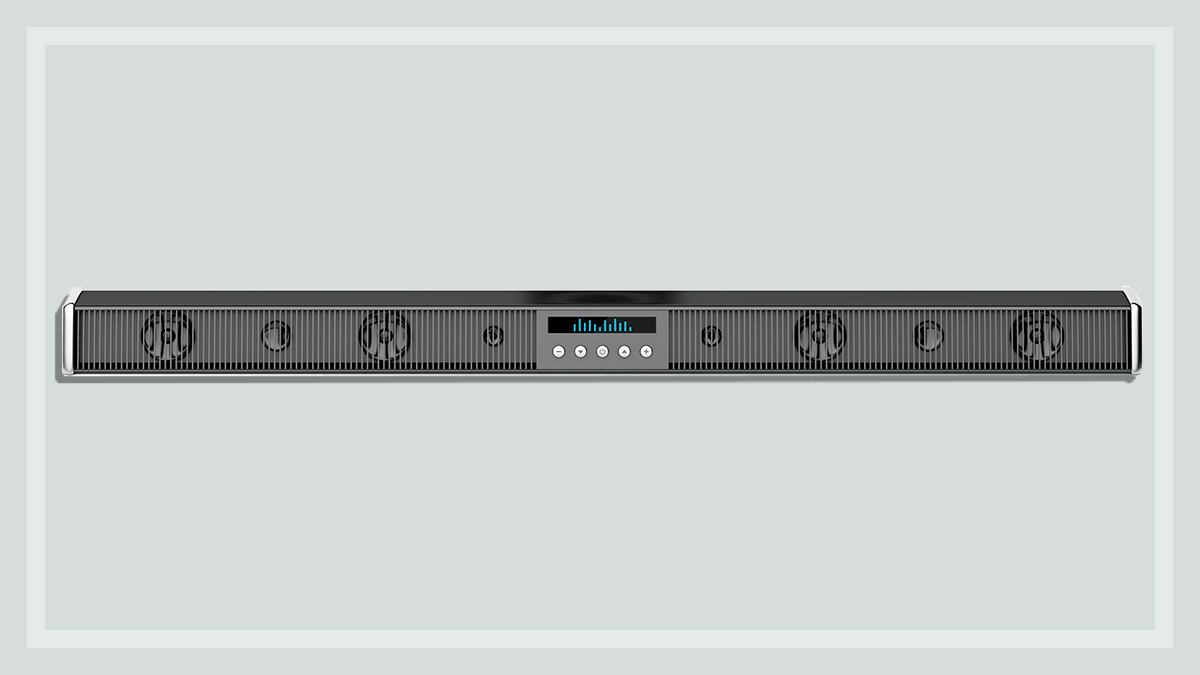Get our independent lab tests, expert reviews and honest advice.
How to pick the right soundbar

You might think a home theatre sounds like a great idea, but not everyone has the space for a multi-speaker setup (nor the desire to spend a weekend weaving a web of wires and cables around their living room). Thankfully we have one word that will keep your home movie experience dream alive: soundbar.
On this page:
- What is a soundbar?
- Is a soundbar right for you?
- How much do soundbars cost?
- What should you look for in a soundbar?
- How to connect your soundbar to the TV
- Dolby, DTS and surround sound explained
- How to recycle your old soundbar
What is a soundbar?
A soundbar is basically a singular box containing several speakers designed to sit just below your TV screen and give your home movie experience an audio boost. Most can’t deliver the same sound quality as a dedicated multi-speaker setup, but many get close enough for the average set of ears. They also take up less room and there’s a lot of choice for a variety of budgets.
Proper surround sound setups use a collection of speakers carefully placed around the room. These typically consist of five speakers and one subwoofer (5.1) or seven speakers and one sub (7.1). Soundbars are designed to replicate this experience in a much smaller package that connects directly to your TV with a single cable.
But while they claim to deliver true surround sound, they’re better thought of as an alternative to traditional 5.1/7.1 systems, rather than a direct substitute. One that essentially mimics the effect of surround sound, particularly when it comes to rear channels (speakers at the back).
The technologies used in soundbars either bounce sound around your room (called beamforming) or use signals to trick you into thinking the sound is coming from a specific position (called HRTF). If you have a lot of soft surfaces in your room, it’s harder for sound to bounce around, so avoid the beamforming models as they’re better suited to rooms with lots of hard surfaces.
Is a soundbar right for you?
Soundbars perform poorly in large open-plan areas but do well in smaller enclosed rooms where you sit no more than a few metres away. A soundbar can be ideal for lounge room entertainment but they’re not really designed for the outdoors.
Setting up a soundbar is quite straightforward. Just make sure you have enough space in front of or below your TV screen (they’re usually less than 15cm tall) and that it’s approximately positioned at head height relative to your ears when you’re on the lounge.
Some also include a subwoofer. If yours does and it has a cable connection, make sure there’s enough cable length to position it for best effect. Many soundbar models now use wireless subs, so you can place them anywhere in the room.
How much do soundbars cost?
In our latest soundbar reviews, we tested models ranging in price from $100 all the way up to $4000. But we’ve found price isn’t always an indicator of sound quality, with some models under $300 outperforming ones that cost over $1000.
If you want to upgrade to an Atmos/DTS-X soundbar, you’ll also need a Blu-ray/4K player and content that supports this format. Check the back of the box or video information on streaming services like Netflix for Atmos, DTS-X or both to confirm whether the content you’re viewing supports 3D audio.
What should you look for in a soundbar?
Connections: A Bluetooth connection will make it easier to connect your phone or tablet to the soundbar, but you’ll have to ‘pair’ them before this will work. To connect a DVD or Blu-ray player, check that the soundbar has at least one digital audio connection (either TOSLINK or Digital RCA) as well as stereo inputs. HDMI input is ideal. This connection will pass the video signal through the soundbar to the TV with just one cable. Some also have an AUX port to connect an audio player.
Front display panel: A display panel at the front of the soundbar is very handy when you want to listen to music without turning on the TV. Look for a model that allows you to dim the display or turn it off when you don’t need it, as it can be distracting if it’s too bright.
Music streaming: Built-in streaming services such as Spotify and Tidal can be handy if you like your tunes. Rather than streaming via Bluetooth, inbuilt connectivity uses your phone or tablet as a remote, while streaming to the soundbar directly from the cloud via Wi-Fi. This can improve audio quality and battery life.
Rear speakers: A few models have added ‘surround sound’ support, so you can connect additional speakers that sit at the back of the room to mimic 5.1 surround sound. These speakers are sold separately as optional extras, or in bundles for an additional cost.
Subwoofer: A soundbar that includes a dedicated (external) subwoofer can sound better than one that doesn’t, particularly in a large room. A well-made sub will improve low-end audio quality while adding that cinematic feel to your setup. However, a poorly made sub can have a negative impact on sound quality. If you want some bass but don’t have room for an external sub, consider a soundbase. These sit under your TV and include a built-in subwoofer, which gives your audio more punch.

Video switching: This allows you to pass the video signal through the soundbar to your TV. This is only available on soundbars with HDMI connections, and reduces the number of wires from the DVD player to the soundbar to one, and one from the soundbar to the TV. If you connect the soundbar to the TV using a digital audio connection, anything playing on the TV will send the audio through the soundbar.
Wall mount: Soundbars are usually designed to be placed on a stand below the TV, though you can buy third-party wall mounts if you’d prefer. These only come in horizontal orientations. You could find a way to mount a soundbar vertically, but they’re not designed to project audio that way so there’s no real reason to.
Wi-Fi: Some soundbar models up the streaming ante with Wi-Fi support so you can stream lossless audio over a home network.
Are soundbars energy-efficient?
These days most soundbars cost less than $10 a year to run. You can even find plenty that add as little as $5 to your annual energy bill. But there are some less sustainable models that require two or three times as much power to operate.
This can happen with Wi-Fi-enabled soundbars that are ‘always on’ to some degree. Though it may not be playing audio, your soundbar may be searching for other wireless devices to connect to, or may be active if it has a built-in digital assistant. Alexa and Google Assistant are always listening for those magic activation words (“Hey Google…”) which means supported soundbars are never truly turned off.
If you bought a fancy new soundbar with Wi-Fi and digital assistant support but you have no intention of using them, disconnect it from the internet. This will disable the digital assistants and may help reduce the annual running cost.
How to connect your soundbar to the TV
This really depends on the ages of your TV and soundbar and if you’re connecting any additional devices such as a Blu-ray player, games console or set top box. The easiest option is to connect your devices to the TV, then send audio via the TV out to the soundbar. You can do this using a number of cable types such as HDMI, optical (TOSLINK) and RCA.
HDMI is the best option as it has enough bandwidth to support the highest quality audio currently available in all surround sound formats. But you need ARC or eARC ports on your TV and soundbar to get the best results. Other outputs, such as optical, can do the job, but with some audio compression and surround limitations. Optical, for example, doesn’t support Dolby Atmos or DTS-X object based surround, even if the TV and soundbar can decode these formats.
Understanding where cables go and which ones provide the best quality sound can be confusing, so check out our guide on how to connect your TV to your soundbar.
Common audio inputs
The main wired and wireless inputs and symbols that you’ll find on your TV and soundbar, depending on the model.
Auxiliary – single input.
RCA – left and right inputs, often red and white.
Optical, also known as TOSLINK.
HDMI.
Bluetooth.
Wi-Fi.
Dolby, DTS and surround sound explained
Dolby, DTS and PCM are different audio technologies that essentially tell the soundbar how to decode and play multichannel audio. Movies, TV shows and live concerts usually offer just one of these codecs, though they do occasionally let you choose between two or more. The number of channels refers to the number of speakers used to create a surround sound effect, such as stereo or 5.1.
All the major streaming services use Dolby while video games tend to support it and DTS. These two technologies have been around for some time, so there are a few different versions available with different audio quality and support for additional channels.
Dolby and DTS are the baseline versions that support stereo or surround sound, but they compress the signal. DolbyTrueHD and DTS-HD Master Audio, however, can do the same thing with an uncompressed signal, so the quality is much better.
Dolby Atmos is a surround sound technology that expands on 5.1 and 7.1 systems. Instead of sending tracks to specified speakers around your ears, Atmos creates a spherical space that adds a sense of height. There’s also a DTS equivalent called DTS-X, and both have started making their way into high-end soundbars. In fact, you’ve probably seen them advertised across the packaging.
How do they work?
Say a helicopter flies overhead on screen. 5.1 and 7.1 surround can send it front to back, left to right or all the way around on a horizontal plane. You may also get a slight sense of height but it won’t sound lifelike.
With Atmos/DTS-X however the aircraft can feel like it’s above your head with a more immersive feel (if it’s mixed well) This effect is called positioning or object based surround.
To achieve this, proper 3D audio configurations require a number of speakers positioned around the room and in the ceiling to truly fill the space. For example, a 7.1.2 setup will have seven floor speakers, one subwoofer and two ceiling speakers. The ceiling speakers are often called ‘height channels’. Your amplifier/receiver is programmed to identify where the sound should be in relation to your room, thus creating the 3D effect.
Atmos and/or DTS-X enabled soundbars claim to replicate this effect via clever speaker positioning that doesn’t require any holes in the ceiling. These soundbars bounce audio off the roof with top-firing speakers diagonally angled upwards. When the sound hits the roof, it bounces back down towards your ears, simulating the sense of height. Though it can be effective, this approach rarely sounds as good as a dedicated Atmos or DTS-X setup.
We suggest connecting your soundbar with a new HDMI cable (HDMI 2.1), as this will support the uncompressed version of Dolby and DTS, as well as Dolby Atmos and DTS-X (as long as the soundbar can decode them). However, you can use optical, RCA and so on, but this will limit performance. Our guide on how to connect your TV to your soundbar, linked below, covers this in detail.

How to recycle your old soundbar
If you’ve recently upgraded to a new soundbar, or your current one has played its last note, then you’ll need to repurpose or recycle the old one.
Repurpose it
First, see if you can use it anywhere else at home. Most soundbars will still work without a TV as they support a range of audio inputs including AUX and Bluetooth. More compact models can enjoy a second life as a streaming speaker in your kitchen, for example.
If you have no need for it, offer your old soundbar to family and friends or put it in an online marketplace. Though you could try to sell it, it’ll almost definitely find a new home if you advertise it for free.
Donate it
Some charities accept soundbars but it’s worth phoning ahead to make sure. They’re big items and smaller locations may not have room to store and display them, while others may not accept electronics full stop. Salvos Stores accept electronics but don’t specify soundbars, whereas the Red Cross doesn’t take them at all. Try to find smaller charity operations in your area as well.
Recycle it
Your last option is to recycle your soundbar. Start with the Recycling Near You database. It’ll show you where to find e-waste services in your area.
If that doesn’t yield any results, check out your local council website or give them a call. Most are likely to take soundbars during e-waste drop-off events that happen throughout the year. For example, the Inner West council in NSW (where CHOICE is located) accepts entertainment appliances.
JB Hi-Fi and The Good Guys will also recycle your old soundbar via a partnership with Ecoactive. All you need to do is head to the Ecoactive website, enter your details and the items you’d like to recycle, and a staff member will get in touch.
We contacted TechCollect to see if soundbars are covered under the National Television and Computer Recycling Scheme (NTCRS) but they didn’t confirm. You can always try contacting an NTCRS drop-off point, like Officeworks, to ask whether they’ll take your old soundbar.






